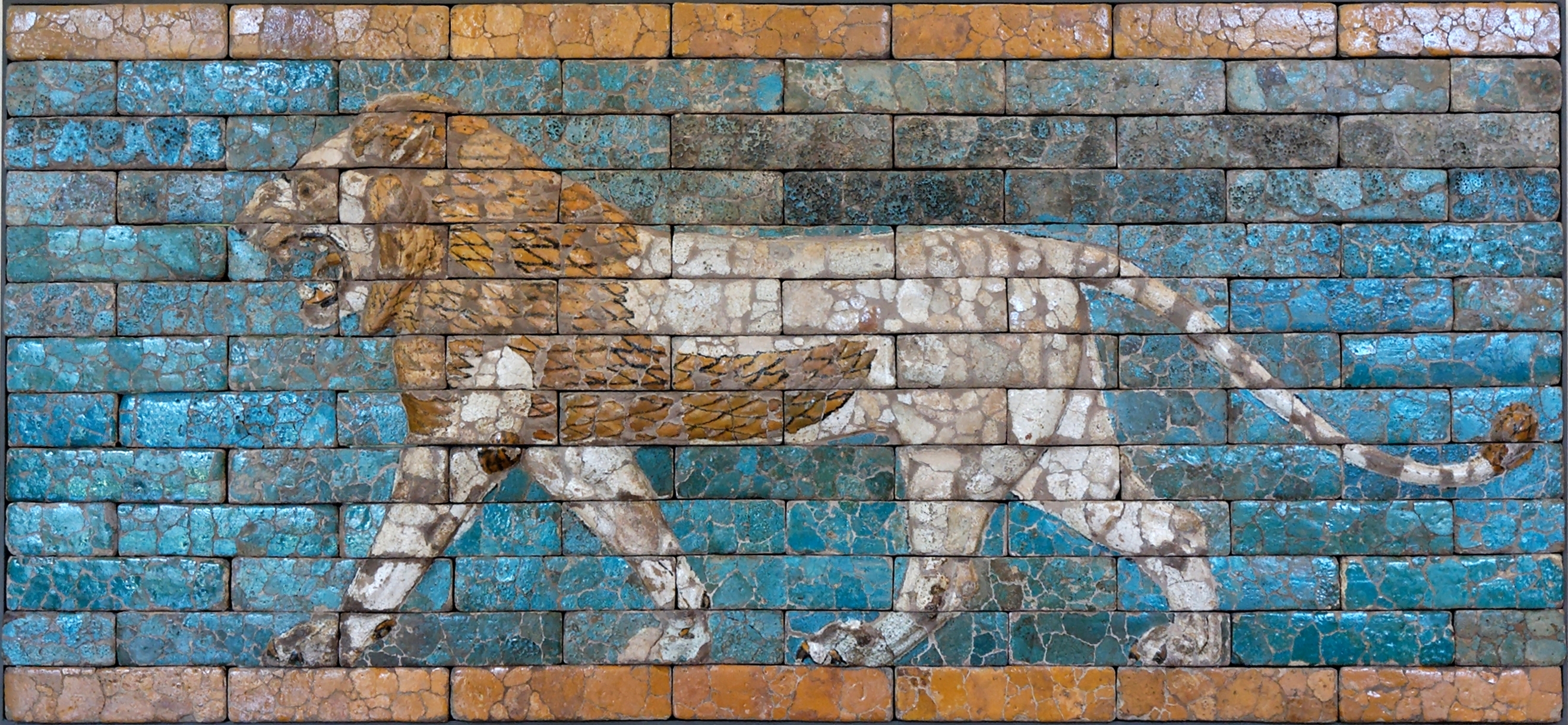Babylon’s monumental Ishtar Gate is undoubtedly among the most impressive monuments erected during the reign of King Nebuchadnezzar; twelve metres high and decorated with glazed bricks, it marked the beginning of the long processional avenue that led to the temple located in the center of the city. The Ishtar Gate was erected in three stages. The magnificent, approximately 250 meters long approach road leading up to the gate dates from the final building phase. It was flanked by thick walls with slightly projecting towers placed at regular intervals. Gate and the towers flanking the approach road were decorated with friezes made of glazed bricks. The Ishtar Gate featured dragons and bulls, symbols of the god Marduk or the weather-god Adad; the towers along the approach road were decorated with lions, symbols of the goddess Ishtar. Between 1898 and 1917, the Deutsche Orient-Gesellschaft headed by Robert Johann Koldewey excavated the Ishtar Gate complex. Today, a part of it is on show at the Pergamon Museum in Berlin; the animal reliefs were reconstructed using original bricks. This relief also belonged to the Near-Eastern Department of the Staatliche Museen Berlin before it was acquired by the Kunsthistorisches Museum in Vienna in 1930, thanks to whom we present it today.
P.S. In our Masterpiece Stories series we talk about this magnificent relief in great detail. <3
P.P.S. If you don't have enough of cats in your life, please check our 50 Japanese postcards set; it is full of images with cats! :D


 Unknown Artist
Unknown Artist